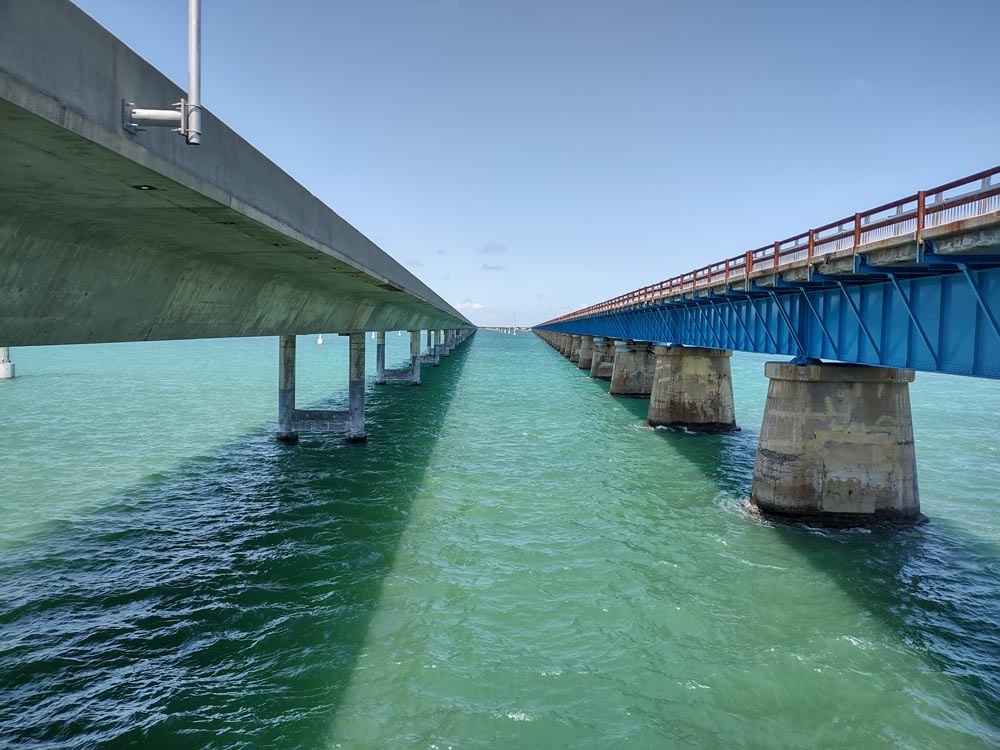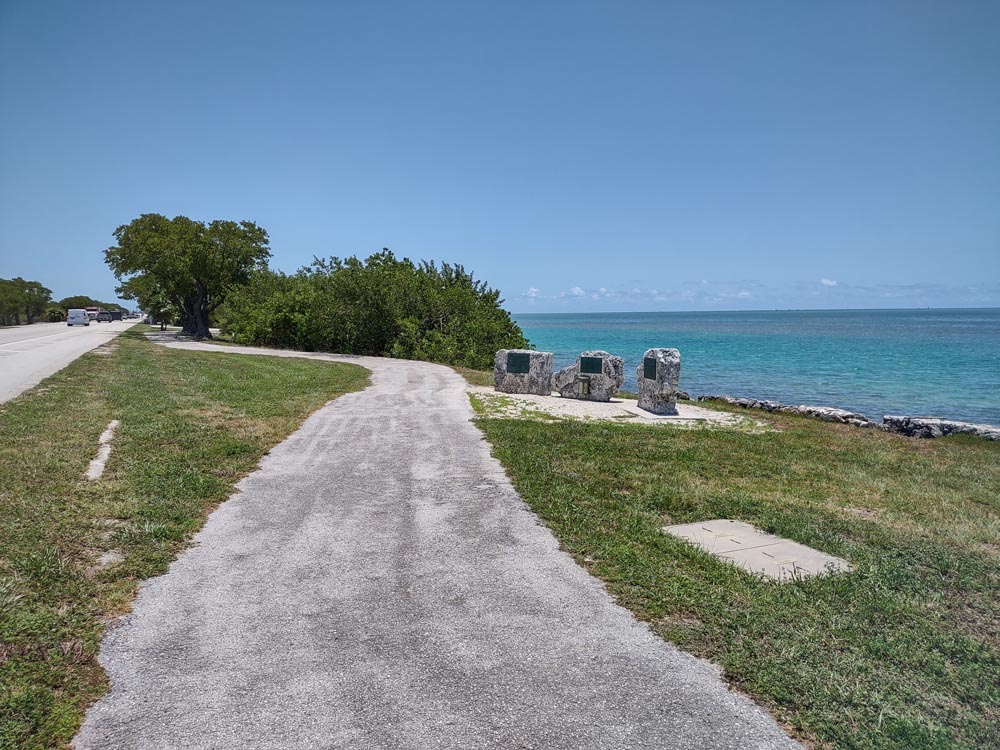
The Florida Keys unwind from the tip of Florida like a ribbon. Over 800 islands surrounded by turquoise waters. You pass the Last Chance Bar and Package and you’re on the overseas highway, a feeling of calmness overcomes you. Then the traffic slows, and you’re stuck behind somebody doing 5 miles under the speed limit. The good news is that you’re almost to Key Largo, the bad news is that it’s taking forever to get there. You’re in luck, there’s a passing lane ahead, and the slow poke is now going 20 miles an hour over the speed limit, you’re not going to pass them now.
Oh well, whether you’re going to Key Largo, Marathon, all the way to Key West, or any other of the many Keys, just relax and enjoy the view and you’ll get to your destination eventually. Anyway, here are some interesting facts about the Florida Keys to help you pass the time.
Not All Islands Are Keys
There are over 1700 islands in the Florida Keys archipelago, but only about 800 are Keys. Keys are formed from coral reefs, whereas islands are made by a geological or hydrological activity. Keys are usually smaller, while islands can be any size.
50 Keys and 42 Bridges in the Florida Keys

Only 50 keys are connected by the 113 mile long Overseas Highway. You’ll cross 42 bridges if you travel the whole length from Homestead to Key West. And of course, you’ll cross the infamous 7-mile bridge from Marathon to Little Duck Key.
Upper, Middle, and Lower Florida Keys
If you hear people refer to the upper, middle, and lower keys, and are clueless about what they’re talking about, don’t worry, here’s a handy guide.
Key Largo, Islamorada, and Tavernier are the upper keys. Marathon (which like Islamorada is really a collection of keys) is referred to as the middle keys. All the keys, including Key West, south of the 7-mile bridge are considered the lower keys.
Bonus! There are also the Dry Tortugas Keys. Dry Tortugas is a collection of keys that are about 70 miles west of Key West and only accessible by boat or seaplane (or submarine if you have one available).
Ghost Town in the Florida Keys
There is an easily accessible ghost town in the Florida Keys. Indian Key was once the seat of the county with a hotel and housed a viable shipwreck recovery industry. In 1840 Indians attacked the island, there were some survivors, but the key never got back to its full potential. While no buildings are still standing there are original foundations and roads on the island. The only way to get there is by boat or kayak.
Overseas Railroad in the Florida Keys
In 1905 Billionaire Henry Flagler had hotels up and down the coast of Florida and in Key West, the only way to get there was by boat, but that wasn’t mainstream enough for ole Henry. He decided to build a railway to pretty much ferry people to his hotels. It was completed in 1912 and was used until the great hurricane of 1935. After that the state took it over and made it the Overseas Highway. You can still see remnants of the old highway along the route, most noticeably the old train bridge on Bahia Honda.
Florida Keys Overseas Heritage Trail

While the old railroad does not still exist for the most part, you can walk or bike from Key Largo to Key West on its remnants. There is a 106-mile paved rail-trail on the former railbed. So, if you’ve ever wanted to bike the length of the Florida Keys just know that it’s possible.
State Parks in the Florida Keys
There are nine state parks in the Florida Keys, 4 of which you can camp at. The campgrounds sell out quickly year-round so you either have to be really flexible on your dates in case something comes up, or you can book up to 10 months in advance.
John Pennekamp Coral Reef State Park has camping, kayaking, glass bottom boat tours, and snorkeling!
Mile Markers in the Florida Keys
Mile markers are a big deal in the keys. From mile marker 127 when you leave Florida City, to mile marker 0, and yes there is a mile marker 0, in Key West. The easiest way to tell somebody where something is in the Florida Keys is to refer them to the mile marker number.

Florida Keys Was a Shipwreckers Paradise
The waters around the Florida Keys are notoriously difficult to navigate due to shallow reefs and unpredictable weather. There were industries devoted to recovering shipwrecks and their cargo and it was very competitive. Usually, the company that got to the wreck first and salvaged the cargo was awarded a 10% reward. There were shipwreck recovery and salvage companies all throughout the Keys.
Florida Keys Shipwreck Trail
There are untold numbers of shipwrecks scattered throughout the Florida Keys. But did you know that there is an official shipwreck trail that features 9 shipwrecks that you can dive? Some are in as little as 20 feet, others are below 100 feet. While some ships were victims of the shallow reefs and weather, there are a few of them that were purposely sunk.
The Adelaide Baker
Located four miles southeast of Duck Key, the Adelaide Baker hit a reef one night in 1889 and sunk. Her cargo was sawn timber, and she was headed for Savannah Georgia. There are a mast and other iron remains scattered over a 1400-foot path.
The Amesbury
A World War 2 survivor was being transported to deep water to become an artificial reef in 1962 and ironically was grounded before it got there. A storm broke it up before it could be refloated, and it was left to become a reef where it was at. The Amesbury is located 5 miles west of Key West.
The Benwood
While traveling from Tampa to Norfolk Virginia in 1942, the Benwood was in a blackout condition because of suspected German U-boats in the area. Unfortunately for the Benwood, the Robert C Tuttle was also traveling with its lights out. The Benwood struck the Tuttle and started taking on water. The captain tried to get back to land but after three hours gave the orders to abandon ship. She rests between French Reef and Dixie Shoals, and you can do a cool virtual dive here.
The City of Washington
Built in 1877 the City of Washington had a relatively long life. In 1917 the ship was being towed and ran aground on Elbow Reef where it broke up and sank. The remains are east of Key West in 25 feet of water. Luckily for divers she had a steel hull that is still visible today.
The Duane
The Duane is a 327-foot U.S. Coast Guard Cutter that was donated to the Keys Association of Dive Operators to be used as an artificial reef. Sunk in 1987 the Duane is still intact in 60-100 feet of water on Molasses Reef. On clear days you can see the outline of her hull from above.
The Eagle
The Eagle was a hull freighter that was waiting to be sunk for an artificial reef when she broke from her moorings and sunk on her own. She lies in 110 feet of water 3 miles northeast of Alligator Reef Light. Broken in two the Eagle is mostly intact.
The North America…Maybe
It’s never been confirmed but most people think that this wreck is The North America. The ship was lost in 1842 carrying dry goods and furniture. Located just east of Sombrero Light, The North America…Maybe lies under 14 feet of water.
The San Pedro
The San Pedro is the oldest ship on the trail and it’s also an actual treasure ship. She was part of the Spanish treasure fleet that was caught in a hurricane in 1733. The San Pedro was carrying 16,000 silver pesos and Chinese porcelain. She went down in 18 feet of water one mile south of Indian Key.
The Thunderbolt
The Thunderbolt is another intentionally sunk ship in the Florida Keys. Sunk in 1986 in 120 feet of water the 189-foot ship is still intact. She is located 4 miles south of Marathon and Key Colony Beach.
Florida Keys National Marine Sanctuary
To protect the waters around the Florida Keys, in 1990 The Florida Keys National Marine Sanctuary was established. It encompasses over 2900 square nautical miles and prohibits oil exploration, mining, or any activities that could alter the sea floor. It also establishes that you cannot anchor, touch, or collect coral, so leave those conch shells where you found them.
If this article about the Florida Keys perks your traveling desires, then get your travel snacks ready to do our Key Largo to Key West in One Spectacular Trip!



Recent Comments